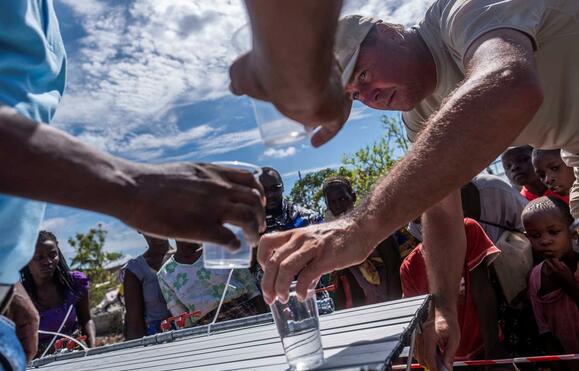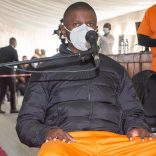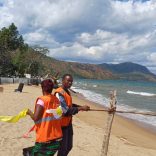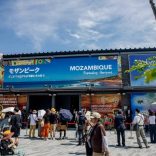Mozambique: Unidentified ship immobilized off Xai-Xai beach - report
Turning a fetid liquid into crystal-clear water – the Danish miracle in Mozambique

Photos: JN
Danes in Mozambique are producing 7,000 litres of pure water per day using new, chemical-free purification machines.
On April 1st, in Beira, the martyr-city of the March 14 cyclone in Mozambique, DEMA, the Danish Emergency Management Agency, activated a team of 13 personnel and six water purification machines, and since then have been performing magic. Extraordinary and supernatural acts, literally.
Such as? Turning hideous, green, fetid water, into natural H2O – transparent, colourless, odourless and, as all water should be, tasteless.
Water is “the” indispensable element for the survival of most living beings, animals and plants, and here in Beira, with the outbreak of cholera and other fatal waterborne diseases, having clean water can be the difference between life and death.
Head-of-mission Bo Kruger, clad, like the rest of his team, in khaki shorts and t-shirt with big boots on his feet, speaks as if this were the most natural thing on Earth.
“We use zero chemicals, everything is natural. What our Bene Box 1200 machines do in the PureH2O system is extract from the water all the components that don’t belong there. It gets rid of the sulphates, which smell like rotten eggs, and the e-coli, the fecal bacteria whose transmission is the main cause of pathogenic disease strains,” he explains, matter-of-factly.
Magic? No, technology
Magic? “Not so much,” Bo says, “just good technology and scientific knowledge.” He demonstrates: rotten water comes out of the well and into a tank, winds its way through the inner tubes and pipes, and comes out crystal clear into two 10,000-litre tanks where it is stored for distribution to the population. We taste it: splendorous water, clean and sweet. “We make 1,400 litres per hour, and deliver 7,000 litres per day to the hundreds who come here to Macurungo Hospital.”
It is Sunday morning, 28 degrees and the sun burning down, and the tall, serene Dane is surrounded by children and women who flock there with all sorts of receptacles: bottles large and small, buckets, jerry cans, jugs, which they in turn carry home with the precious cargo inside. Many come from afar: Chipangara, Matacuane, Macuti Miqueijo, places an hour’s walk away.
Here comes tiny Júnior, a 9-year-old in a t-shirt that says “tough guy”, back again for a refill. He carries a 15-litre demijohn and walks bent and twisted but happy under the weight.
And Arnaldo Retrato, another convert, 13 years old, barefoot and clothes in tatters like everyone else, but smiling softly. “It’s very good, it is, sweet even!”
Slowly lifting two demijohns onto his shoulders, 17-year-old Eurico Carlito summarises the situation. “Water is our main problem, then food, then shelter, then lack of a future. We have nothing at all, the typhoon blew it all away,” he concludes. “Are these gentlemen always here?”
No, the Magical Danes return home on the 14th. Eurico’s face darkens as he lowers it and goes his way, bearing all that weight. He has to be back in an hour.
By José Miguel Gaspar


















Leave a Reply
Be the First to Comment!
You must be logged in to post a comment.
You must be logged in to post a comment.